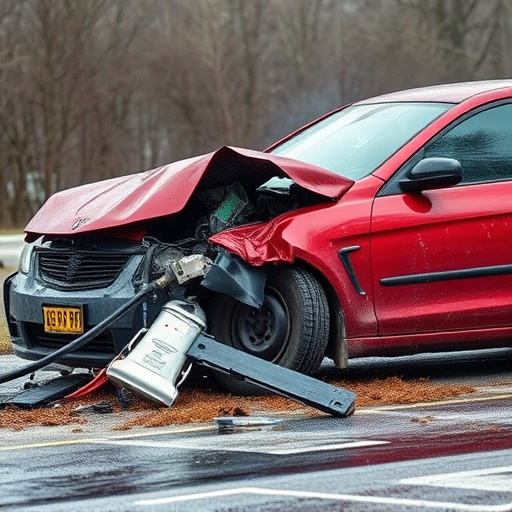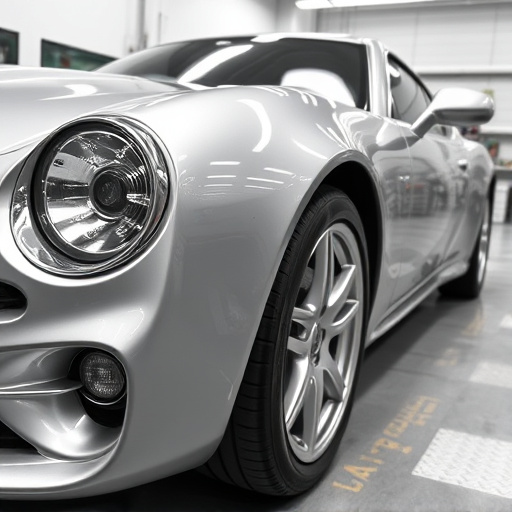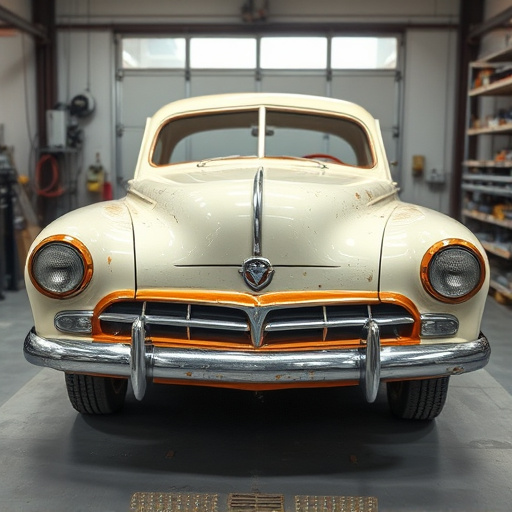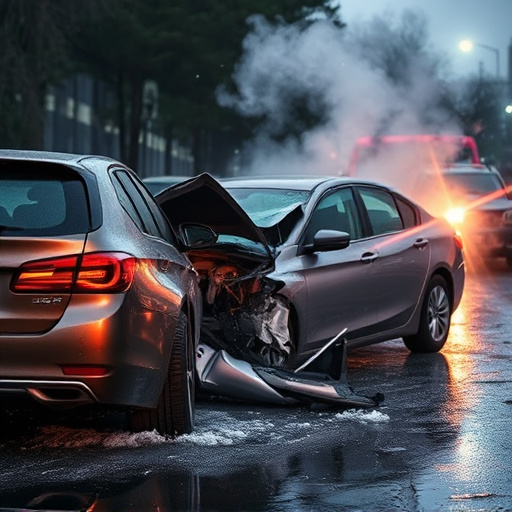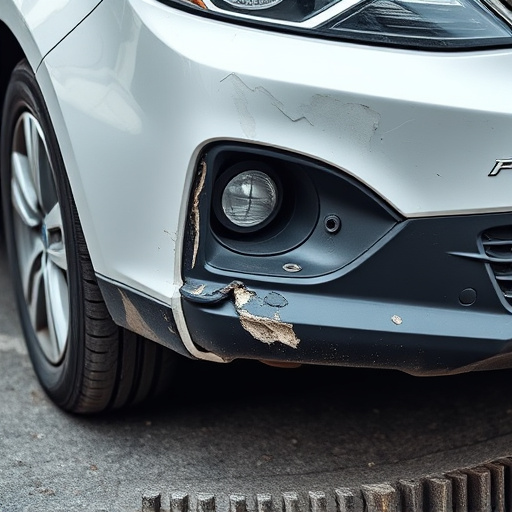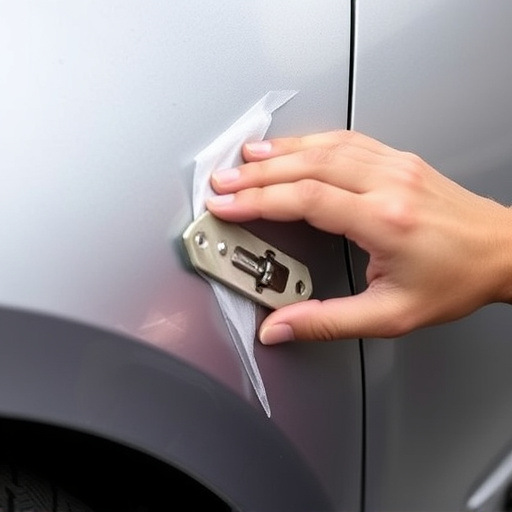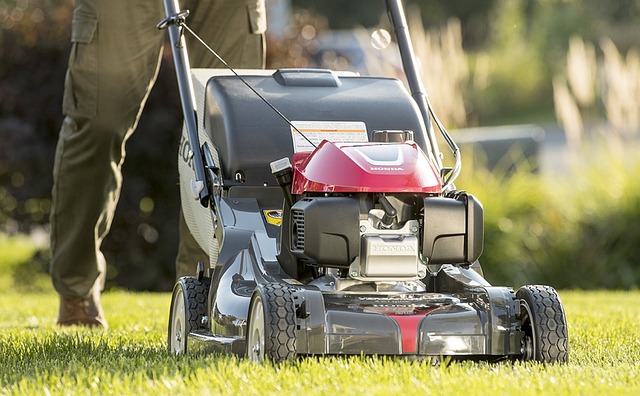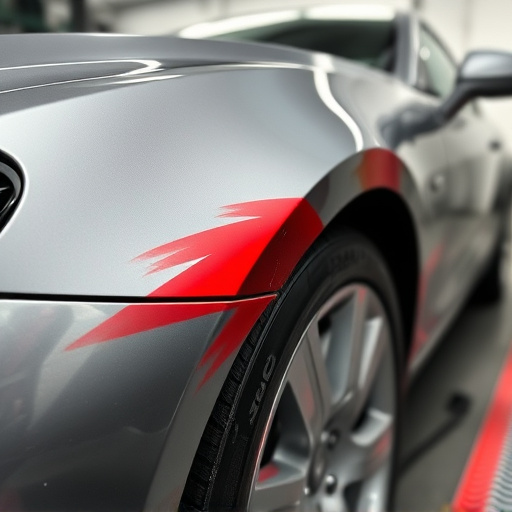TL;DR: After a vehicle collision, meticulous exhaust system damage assessment using visual inspection, diagnostic tools, and advanced imaging is crucial for safe and effective exhaust system collision repair. Repairs vary from simple welding and metal fabrication for minor dents to complete system replacement or CAD-assisted repairs for severe structural damage. Specialized technicians use modern equipment to ensure optimal restoration, prioritizing both safety and vehicle performance.
After a collision, diagnosing exhaust system damage is crucial for safe and effective collision repair. The exhaust system, comprising components like headers, catalytic converters, and mufflers, plays vital roles in engine performance and emissions control. This article guides you through understanding these components, evaluating damage with visual inspections and diagnostic tools, and exploring repair options ranging from minor fixes to complete replacements, ensuring your vehicle’s safety and efficiency on the road. Learn how to navigate exhaust system collision repair for optimal results.
- Understanding Exhaust System Components and Their Functions
- Evaluating Damage After a Collision: Visual Inspection and Diagnostic Tools
- Repair Options for Different Levels of Exhaust System Damage
Understanding Exhaust System Components and Their Functions

The exhaust system is a complex network of components designed to efficiently expel gases from your vehicle’s engine and reduce noise levels. It begins with the muffler, which absorbs and mutes sound waves produced by the combustion process. Before reaching the muffler, gases pass through a series of pipes, headers, and catalytic converters that facilitate their flow while ensuring harmful emissions are treated. The system also includes oxygen sensors and exhaust valves that play crucial roles in engine performance and emissions control.
When a collision occurs, these components can sustain damage, from dents and cracks to complete separation. Proper diagnosis involves inspecting each part for signs of strain or deformation. Advanced imaging techniques, such as X-rays and thermal scanning, can help identify internal fractures. Just like car dent repair focuses on restoring the exterior to its pre-accident condition, collision repair specialists must meticulously assess and potentially replace damaged exhaust system components to ensure both safety and optimal vehicle performance after a crash.
Evaluating Damage After a Collision: Visual Inspection and Diagnostic Tools

After a collision, evaluating damage to an exhaust system is crucial for safe and effective collision repair. The first step in this process is a thorough visual inspection. Look for obvious signs such as dents, cracks, or leaks in the pipes, mufflers, and other components. Even small damages can compromise the structural integrity of the exhaust system, so it’s important to not overlook any visual cues.
For more detailed assessment, collision repair technicians utilize diagnostic tools that go beyond what the naked eye can detect. These tools help identify hidden damage like fractured or separated joints, corroded sections, and misaligned pipes. Modern diagnostic equipment, including computer-aided detection systems and infrared cameras, play a significant role in accurately assessing exhaust system damage, ensuring that vehicle paint repair and other restoration processes are targeted and comprehensive.
Repair Options for Different Levels of Exhaust System Damage
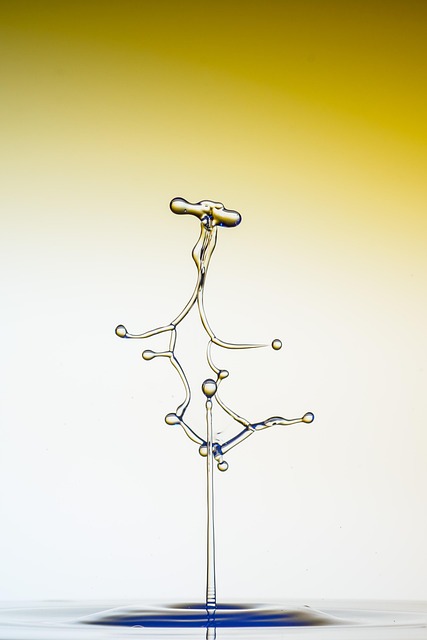
When it comes to exhaust system damage after a collision, repair options vary based on the severity of the impact. Minor dents or cracks can often be repaired by a skilled technician using techniques like welding and metal fabrication. These repairs typically involve replacing damaged sections with new or refurbished parts, ensuring proper alignment and functionality.
For more extensive damage, such as complete system replacement or severe structural issues, a vehicle body shop might need to source specialized components and employ advanced automotive collision repair techniques. This could include computer-aided design (CAD) technology for precise measurements and modifications. Vehicle body repair experts will assess the extent of the harm, recommend suitable solutions, and ensure that the exhaust system is restored to its optimal condition, enhancing safety and performance.
After a collision, properly diagnosing exhaust system damage is crucial for safe and effective collision repair. By understanding the components that make up this vital system and their functions, technicians can conduct thorough visual inspections and utilize diagnostic tools to accurately assess the extent of the harm. Depending on the level of damage, various repair options are available, from minor replacements to complete system overhauls. Prompt and expert exhaust system collision repair ensures not only vehicle safety but also optimizes engine performance and maintains a seamless driving experience.



